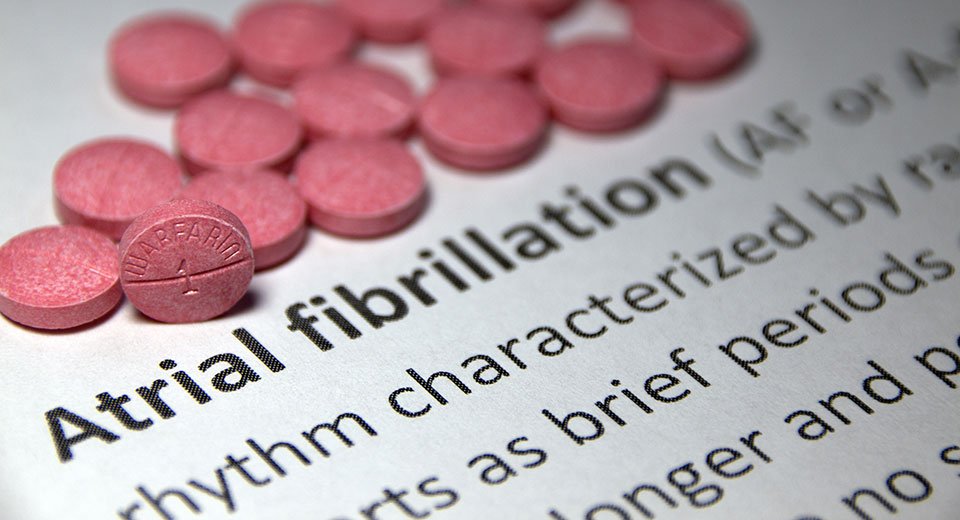Do you have AFib, and is it being treated?
![]()
Despite the clear benefit of anticoagulation therapy for patients with a heart arrhythmia known as atrial fibrillation, just four in 10 people with the condition have been prescribed blood thinners, according to a new study.
The number of people with atrial fibrillation, or AFib as it’s commonly called, has been on the rise over the past 30 years. The prevalence of obesity, instances of metabolic syndrome and the fact that people are living longer are all cited as reasons for what some are calling an epidemic.
AFib is dangerous because it can lead to other cardiac complications. It also causes a fivefold increase in the risk of stroke, according to the American Heart Association. While some people might have symptoms like rapid heartbeat, dizziness, shortness of breath or fatigue, most have no symptoms at all.
“Most patients who have AFib are not aware of it, so they’re not feeling any irregular or rapid heartbeat,” said cardiologist Claude-Laurent Sader, MD, of the Cape Cod Healthcare Cardiovascular Center in Hyannis. “We only know about it if we do an EKG or a visit to the office where we figure out that their heartbeat is irregular.”
AFib is an irregular heartbeat caused by electrical wavelets in the left atrium, he said. The irregular electrical impulses cause the heart to beat more rapidly, which translates into the heart not pumping as efficiently as it should. There is fibrillation/fluttering/quivering in the atria instead of the normal contraction. When that happens, blood pools and coagulates into the left atrial appendage, causing clots. If a clot travels to the brain, a stroke occurs.
“Not all strokes come from AFib, but the ones that come from AFib can be quite devastating and could be preventable,” Dr. Sader said. “The way you can prevent them is to put the patient on a blood thinner.”
Powerful Blood Thinners
That seems like a simple answer, but a study published in the Journal of the American College of Cardiology showed the low number of people with elevated risk for stroke that have been prescribed blood thinners. The study, which looked at 655,000 patients over a nearly seven-year period, indicated that hundreds of thousands of strokes might be preventable each year.
There are many complex reasons why doctors aren’t always prescribing blood thinners, according to Dr. Sader. The first one is that they may not be aware the patient has AFib, since there are rarely symptoms. Doctors need to be more vigilant in screening for AFib in patients with elevated risks like sleep apnea, diabetes, high blood pressure, a previous stroke or other forms of vascular disease, he said.
“The other reasons medicines like Coumadin aren’t always prescribed is they are very powerful blood thinners,” he said. “Sometimes blood thinners to protect against stroke can cause a dangerous problem with bleeding.”
For a patient who has multiple risk factors like those listed above, the significantly higher risk of stroke is greater than the risk of bleeding. Cardiologists must weigh the pros and cons of each before prescribing blood thinners. One of the ways they do so is with a table called the CHA2DS2-VASc score. At the Cardiovascular Center, Cardiologists can plug in a patient’s information and calculate the risk of stroke.
“Cardiologists use it all the time,” Dr. Sader said. “It gives you a scientific measure of what your risk is. The higher your score, the higher your annual risk of stroke. If your risk is 6 percent per year, would you be willing to take a 6 percent chance of stroke versus a possible complication with bleeding?”
Other Treatment Options
There are also other medications that can control the heart’s rate and rhythm known as antiarrhythmic drugs. For those who aren’t helped by blood thinners, or who simply can’t take them because they’ve had complications with bleeding in the past, there are procedures that can be done by EPS specialists at Cape Cod Healthcare’s Heart & Vascular Institute.
They can do catheter ablation also known as pulmonary vein isolation where they thread catheters up through the groin to the left atrium and create a small scar around the pulmonary veins that stops the atrial fibrillation. The procedure is about 80 percent effective, Dr. Sader said.
Another new treatment that Cape Cod Healthcare just began doing last year uses the Watchman™ device. It’s a tiny umbrella-shaped device that can be threaded through the groin. Once it’s positioned in the left atrial appendage, it opens up and closes off the left atrial appendage where the blood pooling and clotting is occurring, so clotting can’t take place.
Occasionally a patient may end up with AFib on a temporary basis. It can be triggered by thyroid disease, pneumonia, the flu or other serious infections. This type of AFib, which is provoked by outside factors, usually resolves itself when the contributing problem is solved.
Patients with true atrial fibrillation fall into two categories, Dr. Sader said. The first group has a healthy structurally-intact heart, but they have a rhythm problem. The second, harder to treat group, has other serious heart conditions like leaky valves or a previous massive heart attack.
“We treat both AFibs very aggressively,” he said. “But one group has a very good long-term prognosis because they have a strong healthy heart. Those with other major heart problems may need more interventions like a valve replacement, Coronary bypass or open-heart surgery.”
